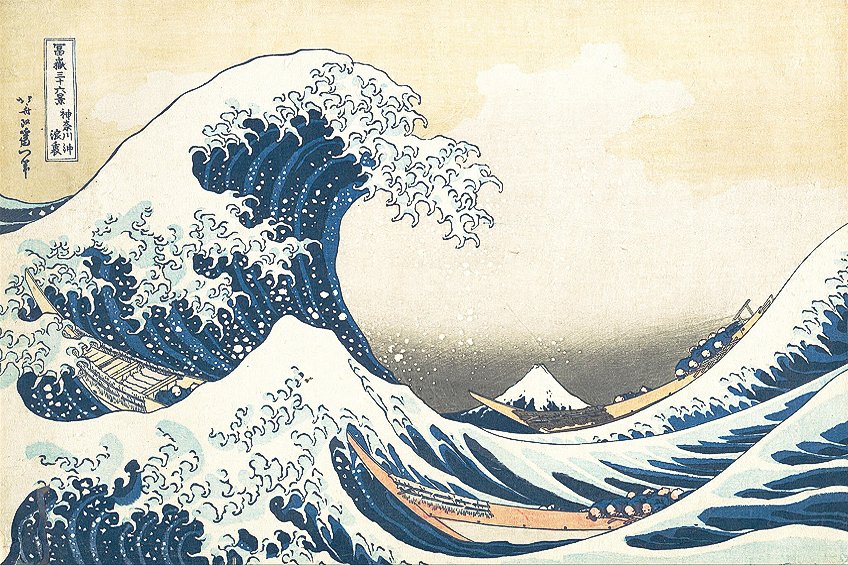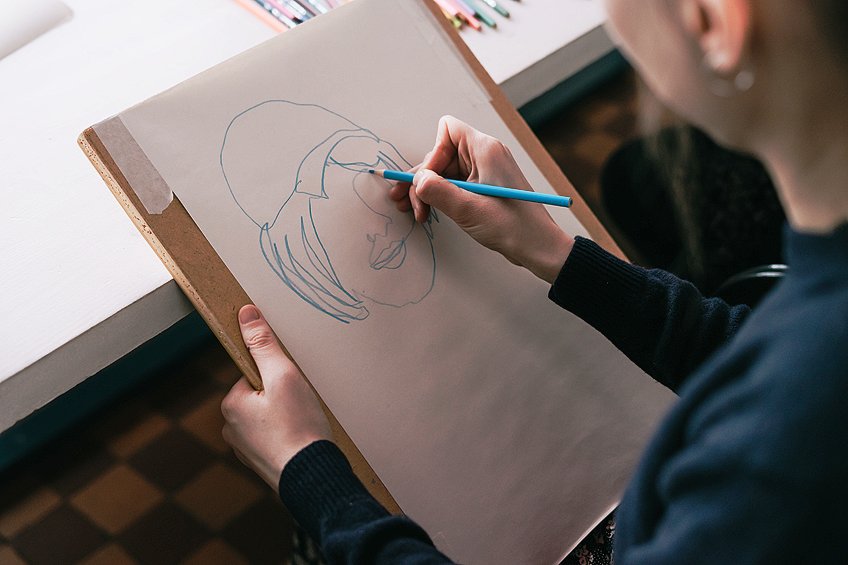Composition in Art – The Secrets of Artistic Arrangement
What makes an artwork stand out, and what is the most common purpose for composition in art? In this article, we will be examining the art of composition, which helps you to understand the elements that make up your masterpiece. In other words, artistic composition is understood to be a secret language that can be used to tell stories and evoke feelings without the use of text. We will further unpack the elements of composition and different composition techniques that can help you enhance your artwork.
Contents
Understanding Compositions: What Is Composition in Art?
Art is not as difficult to debunk as it is to take on a home project and rearrange your living room furniture for a new “change” in your living space. Similarly, understanding composition in art can be compared to understanding how your living space affects the atmosphere of a room. For example, you may prefer warm-toned colors in your living rooms versus a cool-toned approach for your bathroom. Likewise, the role of composition in art affects the atmosphere of your artwork and how it is read. Let us review a few simple examples of artistic compositions in famous works to get you comfortable with identifying composition. For example, if one looks at Leonardo da Vinci’s Vitruvian Man (c. 1490), one might notice the symmetrical balance of the work that emphasizes the harmony that exists between geometric shapes and the human body.
Or Starry Night (1889) by Vincent van Gogh, which if one is a huge fan of, will recall the swirling patterns of the sky that create a sense of movement and draw you into the painting’s subject.
While these examples are the easiest to begin with, we will happily guide you through a few additional examples later in the article. So, what is composition in art? Composition in art is defined as the organization of elements in an artwork, such that they are arranged in a way that makes them aesthetically and visually pleasing as a whole. One might even include terms like “harmonious”, “unity”, and “balance” to describe a skillful composition. Composition may seem like a challenging task, especially since you may wish for your artwork to be a success. In application, composition can further be understood as an intentional selection and placement of visual elements like color, line, space, texture, and shape to relay a particular message or emotion.
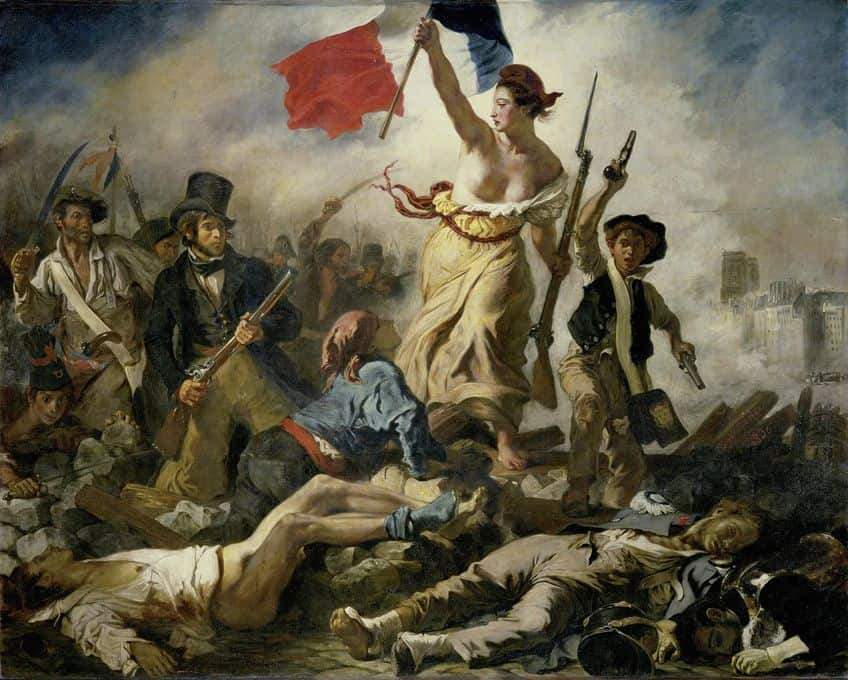
The term “composition” is also understood as the idea of “putting together” elements in an artwork. To do this, artists rely on the use of art elements and the principles of art to arrange visual elements using a system of visual ordering. Similarly in music, compositions are organized using conscious thinking to create a formal structure or layout for your artwork. This brings us to the significance of composition, which may be more evident for you now after defining the term. Composition functions as the backbone of the artwork that dictates the way a viewer engages with the artwork. This means that you have the power to direct the viewer to the subject or any element of your artwork using the right composition techniques.
Artists have to carefully plan the arrangement of these elements, which includes thinking about the relationships that elements have with each other and the kind of message they want to communicate.
The Different Elements of Composition
What is the most common purpose for composition in art, and what elements are used to craft a composition? In composition, one has to understand the different elements that work together to make an artwork truly shine. Establishing an effective composition is important for conveying the artist’s message through various visual elements. Below, we will review the different elements used to create artistic compositions that you may spot in the artworks discussed below.
- Line: The element of line is one of the basic elements for establishing composition. Lines help us direct the viewer’s gaze to the desired subject and can communicate movement and emotion depending on their style and direction.
- Space: Strategic uses of space in art can be used to provide a sense of scale using perspective and depth. Important elements such as negative space are crucial to establishing a focal point and adding to the balance of the composition.
- Color: The element of color is perhaps one of the most impactful and effective composition elements. Colors are enhanced through the application of color theory to establish harmony and contrast. By emphasizing certain colors, one can also direct the viewer’s attention to the subject.
- Shape: In art, shapes are understood as either geometric or organic. Shapes can be used to create compelling compositions through the use of patterns to add structure to the artwork while exploring depth. Variations in form and shape can be used to also make the composition more interesting.
- Value: In composition, value is understood as the nuances of light and its effects on the color of objects when light bounces and reflects off objects. The perception of how we see this reflected light is characterized by the idea of lightness and darkness. In color, light is perceived as the highest value while the lowest values are perceived in darker colors. Value contrast helps artists establish the illusion of light, which can influence the impact of a composition.
- Texture: By effectively highlighting the tactile qualities of elements in your artwork, you can create a visually fascinating composition. Viewers can visually explore texture through mark-making and imagine the way that the surface of a canvas might feel.
- Form: When looking at form in terms of composition, one can draw attention to the notion of a three-dimensional body that describes the physicality of the artwork. Sculpture is a medium that best encapsulates the notion of form since it encloses volume, height, length, and width. Forms can be mathematical elements like cones and spheres, which are geometrical, or organic and irregular such as flower or sinuous features. Why is this key in composition? Forms work with color and value to give a composition the illusion of objects as three-dimensional and this enhances the perception of space.
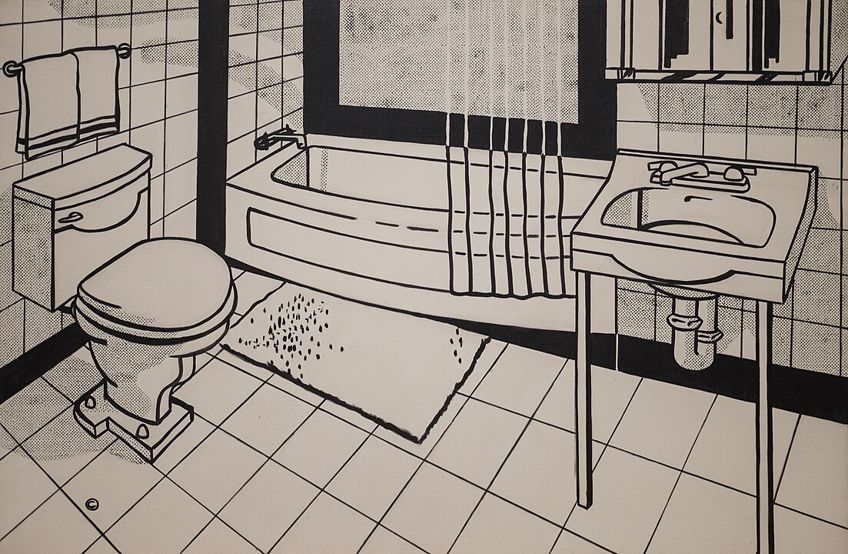
Important Composition Techniques to Know
Before we dive into the different examples of composition in art, you can review these common composition techniques to help you identify and achieve well-crafted compositions in art.
- The golden spiral: This golden composition rule refers to the use of the Fibonacci spiral, also known as the golden ratio, to lay the foundation of your composition. This is achieved by dividing a rectangle into two squares such that the square, which is the length of the longest side of the rectangle, is added to the rectangle along with the diagonal points on the squares to create a path for the spiral. The golden spiral is used to emphasize movement.
- The golden triangle: The rule of using the golden triangle is a method to establish a frame for the subject. The rule states that one can divide a composition into four triangles of varying sizes. To create the triangles, you can establish a diagonal line from the top to the bottom corner of the work and add two lines placed at 90 degrees. This is the makeup for adding your subject in the triangle to create a focus area.
- Shallow depth of field: Composition in photography for example can be enhanced with software simulation or 3D graphics to minimize the depth of field. Artists can also employ the use of a wide aperture to ensure simplification and remove anything that is not the main subject from focus.
- Rule of odds: This composition technique is grounded on the idea that one must apply an odd number of subjects to stimulate visual interest. This notion suggests that odd numbers create a more naturalistic composition than symmetrical ones with even numbers.
- Rule of thirds: This famous composition technique is based on the division of an image into three equal segments to place each subject or object along these lines. This establishes a balanced arrangement in the composition.
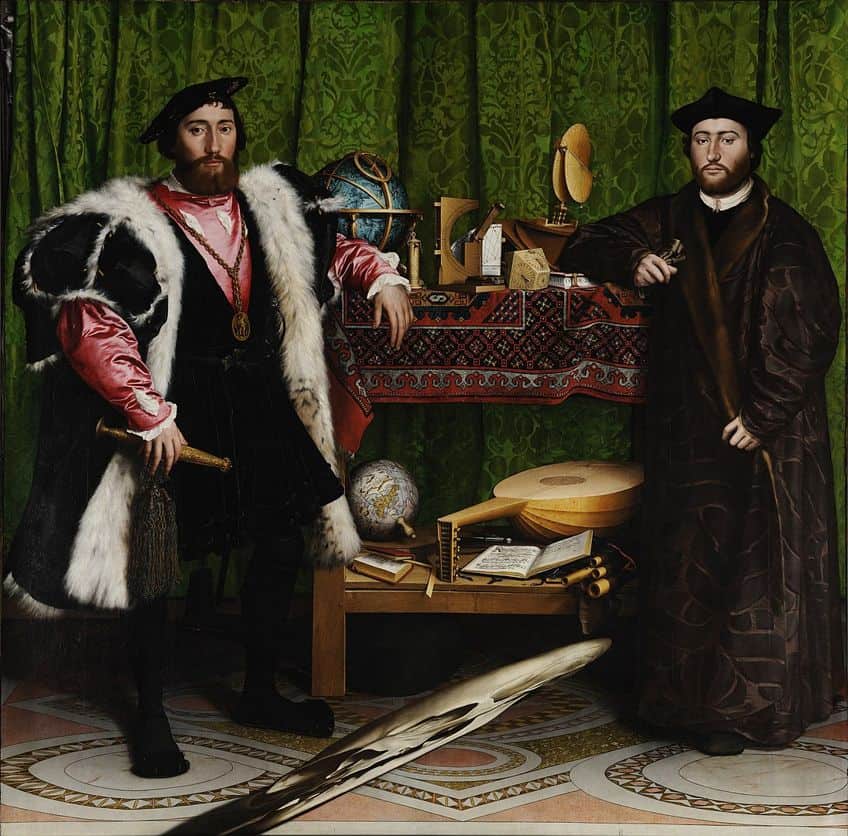
Composition Preparation for Beginners
As a beginner, creating your composition may seem daunting, especially after learning about the different composition techniques. However, this should not stop you from learning how to prepare for your composition. To help you get started, we have created a quick summary of different ways that you can prepare your composition for a simple artwork.
Create Notan Studies
The best way to learn about composition is by observing the works of others. In attempting to replicate the compositions of famous works of art, you can quickly learn how to apply these techniques in your own work. As a practice, carefully observe the work you want to replicate and note the artist’s use of colors, possible techniques, and brushstrokes. When creating a Notan study, you essentially analyze the underlying value range of the work. As such, you need to pay attention to the focal points, balance, and symmetry. After noting the main shapes of the artwork, you can simplify the subject and object into black and white or black, white, and gray areas.
This exercise is a great way to understand harmony and balance while experimenting with composition and shape.
Create a Preliminary Sketch
By creating a basic sketch of your artwork, you can avoid committing to paint and getting confused along the way. Sketches help one to determine the right proportions and structure to use in the actual composition and can be useful in planning the value, details, and colors.
Use a Grid
To ensure greater accuracy, you can create a grid on your canvas in six vertical segments and four horizontal lines to use as reference points for the major aspects of your painting. Grids are incredibly useful in ensuring accuracy and creating a focal point.
Famous Examples of Composition in Art
There are thousands of examples for composition in art that one can use to understand how these composition techniques are applied in painting, sculpture, and many other art visual forms. Below, we have included a few famous examples of composition in painting that will prove useful in unpacking the various composition techniques used to create these masterpieces.
Mona Lisa (1503) by Leonardo da Vinci
| Artist Name | Leonardo di ser Piero da Vinci (1452 – 1519) |
| Date | 1503 |
| Medium | Oil on poplar panel |
| Dimensions (cm) | 77 x 53 |
| Where It Is Housed | Louvre Museum, Paris, France |
The Mona Lisa is one of the most popular examples of how composition was applied using the rule of triangles. Created by the iconic Da Vinci in 1503, the Renaissance masterpiece was prepared with Da Vinci’s expert eye in planning the placement for his subject, who was identified as the noblewoman Lisa del Giocondo.
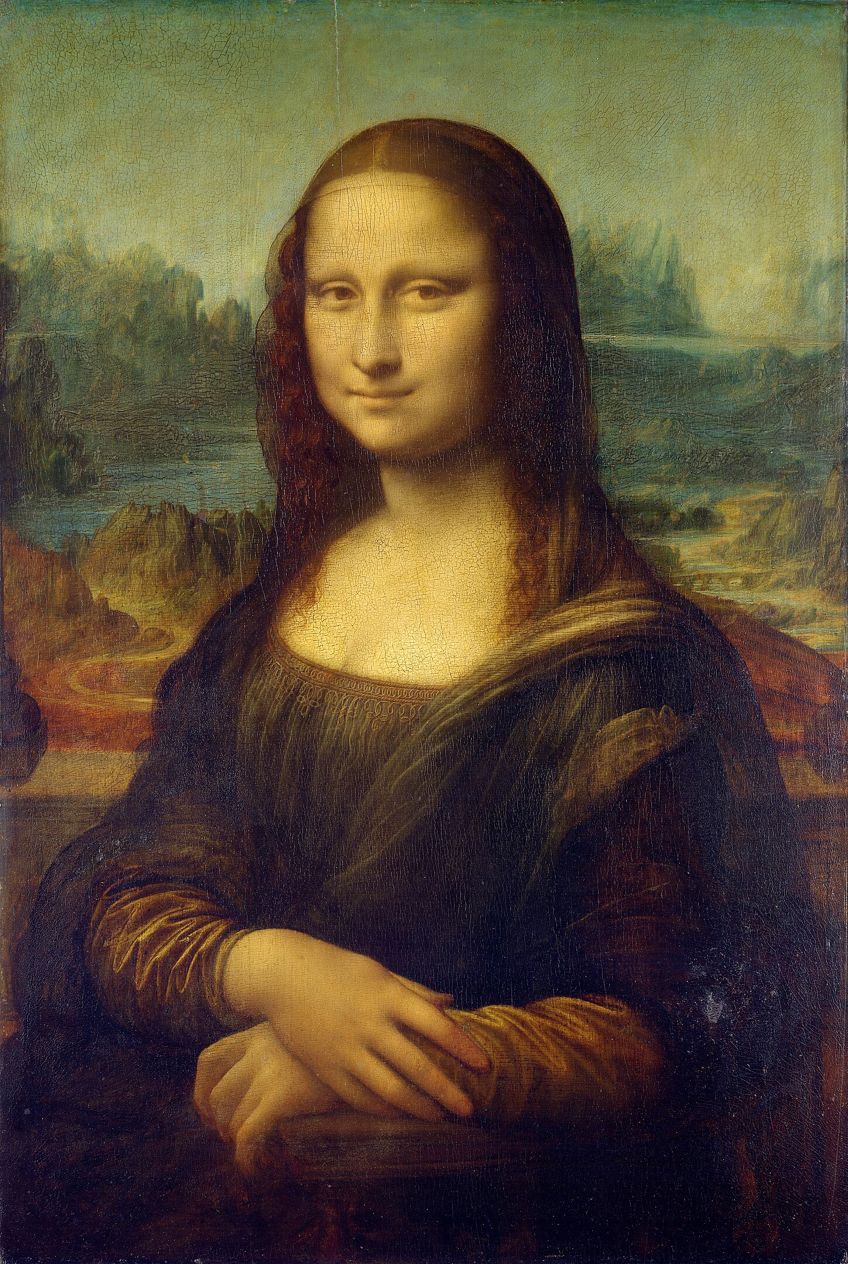
The composition is the backbone of her famous smile and is accentuated using the rule of triangles seen along her elbows, head, and hands to establish a triangle. This timeless triangular setup establishes a natural pose and draws direct attention to her facial expression. Da Vinci also positioned Lisa del Giocondo in the central plane to establish a direct sense of intimacy that focuses our eyes on her face, thus illuminating her classic and coy smile.
Madonna With Child (c. 1600/1699) by Mughal School Painter
| Artist Name | Unknown Mughal school painter (c. 17th century) |
| Date | c. 1600/1699 |
| Medium | Pigment on paper |
| Dimensions (cm) | Unavailable |
| Where It Is Housed | Salar Jung Museum, Hyderabad, India |
Madonna With Child is one of the most famous examples of how the image of the Madonna in European painting influenced the painting subjects of 17th-century Mughal School artists. The famous painting differs slightly from the traditional composition of the Madonna as placed in the central plane since it also adds a sense of elegance and privacy to the religious icon and her intimate connection with the infant Jesus. The vertical orientation of the work sees Madonna seated on the floor with the infant in her lap.
Around her lay books and vases the artist chose to include a decorative stained marble border on the vertical ends of the composition.
The entire composition was executed with a harmonious use of color across Madonna and her surroundings, suggesting the aura and sense of holiness throughout the room, instead of solely on her figure. This Mughal style offers a new perspective of representing the Madonna in this composition, which allows more space for viewers to respect the moment of intimacy shared between divine icons. Most Madonna compositions in European art of this period adopted a closer, direct, and more central view of the Madonna, which often relied on the contrast in color from the figure’s garments to balance the golden and brighter illuminated areas around her.
The Great Wave Off Kanagawa (1831) by Hokusai
| Artist Name | Katsushika Hokusai (1760 – 1849) |
| Date | 1831 |
| Medium | Ukiyo-e woodblock print |
| Dimensions (cm) | 25.7 x 37.9 |
| Where It Is Housed | The Metropolitan Museum of Art, New York City, United States |
The Great Wave Off Kanagawa is one of the most renowned Eastern woodblock prints that was created by the famous Japanese artist Hokusai using the golden spiral method. The movement of the huge wave is seen on the left side of the composition, which is complemented by the space next to it to convey the movement of the sea. The spiral form emanates from the wave as an organic element that uses asymmetry to revitalize the composition and guide the viewer’s gaze toward the tumbling and crashing wave.
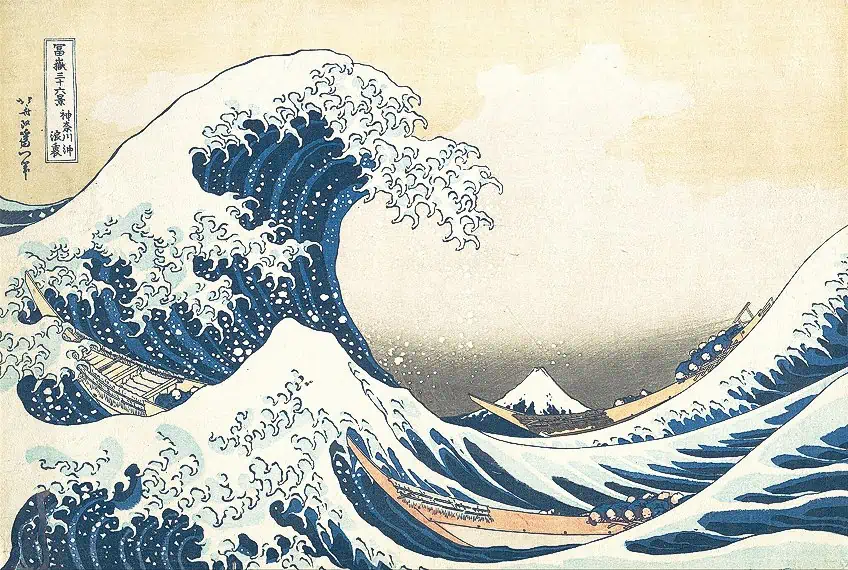
Olympia (1863) by Édouard Manet
| Artist Name | Édouard Manet (1832 – 1883) |
| Date | 1863 |
| Medium | Oil on canvas |
| Dimensions (cm) | 190 x 130 |
| Where It Is Housed | Musée d’Orsay, Paris, France |
One can also look at one of the most controversial paintings of the 19th century that is also among the best examples for composition in art. Édouard Manet’s Olympia is an example of how artists of the past challenged existing norms for establishing composition. Manet’s Olympia relies on the confrontational atmosphere set up by the reclining figure and her direct engagement with the viewer through several composition techniques.
The central figure is placed in the middle of the canvas to first establish a focal point.
The details on the figures such as the color of Olympia’s skin versus the background highlight her figure and create a contrast to deliberately draw attention to the controversy via her nudity. The composition also relied on the use of bold symmetry by the positioning of Olympia in the contrapposto pose to create tension. Additionally, Manet’s use of flat color and loose brushwork challenges the conventions of depth and perspective while creating urgency to convey a somewhat political message about his choices.
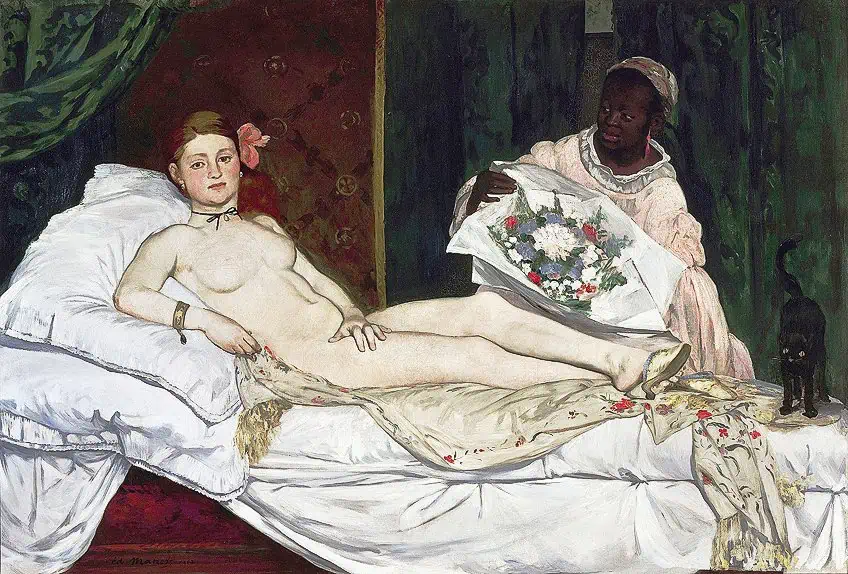
Disrupting the Norms of Composition in Art History
In art history, there have been many periods of change that gave us new insight into how artists have rejected the former teachings of composition. Many of the major shifts in thinking about composition and alternative ways of creating impactful images stemmed from the 20th century. Movements like Cubism for example shattered the notions of traditional perspective in art through the use of multiple viewpoints in a single view. Artists like Georges Braque and Pablo Picasso leveraged fragmented forms to create an abstract method of establishing composition by deconstructing space and form using geometry.
Other art movements such as Abstract Expressionism embraced gestural movements in composition to rely on color and space to create composition.
The notion of non-representation removed the need for recognizable forms and formal uses of symmetry and instead relied on spontaneity, action painting, and gestural mark-making to guide composition. The 20th century also saw the emergence of mixed media artwork and collage as a tool in Surrealism and Dadaism to disrupt reality and redefine artistic materials. This was important to breaking away from conventional composition techniques since artists began to adopt everyday materials into composition making, replacing the need to “work from scratch” per se. Kurt Schwitters for example championed found objects into assemblage art to merge understandings of sculpture and painting, and thus redefine composition by blurring the relationships between two-dimensional and three-dimensional art forms.
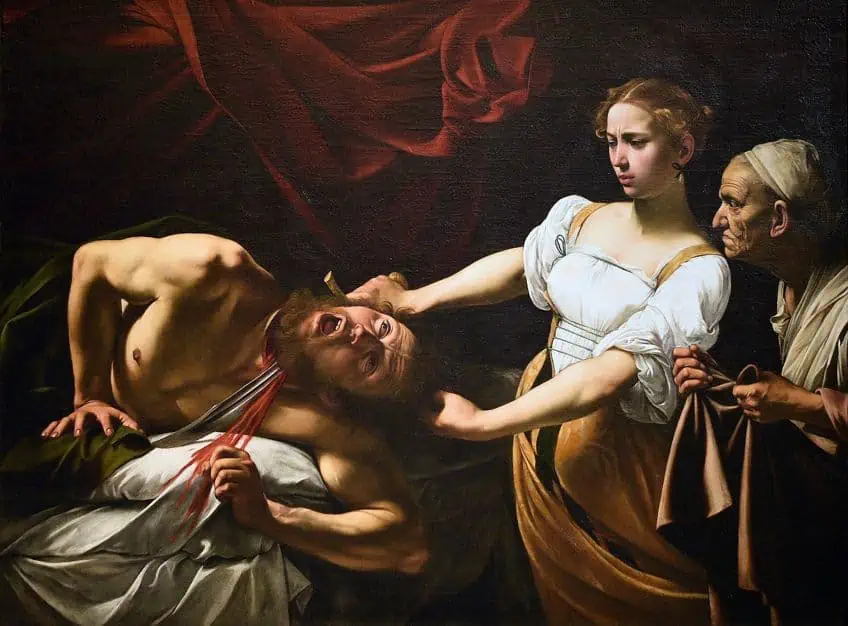
Towards the 1960s, artists like Dan Flavin and Donald Judd negated the need for ornate compositions by pioneering simplicity through Minimalism. Meanwhile, artists like Yayoi Kusama and Damien Hirst questioned notions of space, an element crucial to composition, to provide subliminal ways of thinking about composition in a three-dimensional plane. Today, we continue to witness the evolution of composition through the technological developments of digital and virtual reality. Artists like Casey Reas and Refik Anadol rely on algorithms to produce works that constantly shift and therefore completely throw off the conventions of static compositions. Virtual reality creatives like Olafur Eliasson also disrupt the barriers between the observer and observed, which immerses people into compositions and adds to the multi-dimensional understanding of composition.
As the digital age continues to challenge the mediums of creating, so too does our notion of elements that affect composition techniques. In learning more about how composition can transform your art, you can begin to craft your own method and become a disruptor of convention.
Frequently Asked Questions
What Is Composition in Art?
In art, composition refers to the organization of visual elements in an artwork that are arranged in various ways to produce a specific effect. This can be emotional, visual, or both, and include the use of art principles and elements to create a visually balanced artwork. Compositions are understood as the overall structure of the artwork.
What Are the Elements of Composition?
The main elements of composition in art include space, texture, color, form, shape, line, value, and additionally, mass, volume, and time. Most of these elements are also understood as the elements of art and are paired with the art principles to create a composition.
What Are the Most Effective Composition Techniques?
Among the many interesting composition techniques available today, the most effective methods include the use of a narrow depth of field to create focus on one subject, the golden ratio, the rule of thirds, leading lines, the rule of odds, diagonal lines, and framing. Additionally, artists also suggest simplifying the composition to include only one subject, and adding variety in spacing between objects to keep a composition interesting.
What Is the Most Important Rule in Composition?
While not every artwork uses the rule of thirds or requires it to be a success, it is still considered one of the most important composition techniques. It is widely regarded to be a guideline in painting and photography to decenter the subject of the frame to ensure the image is more visually pleasing. To some, this may sound counterintuitive, however, the rule of thirds involves the division of an image into nine equal parts using a grid structure. The corners of the middle square are the points where you need to place the subject to create an interesting focal point.
What Are the Three Main Components to Achieve a Successful Composition?
While there are art elements, principles, and guiding techniques to achieving a successful composition, artists need to make sure that they include three main components. These components refer to the structure, the balance, and the focal point in the artwork.
Jordan Anthony is a Cape Town-based film photographer, curator, and arts writer. She holds a Bachelor of Art in Fine Arts from the University of the Witwatersrand, Johannesburg, where she explored themes like healing, identity, dreams, and intuitive creation in her Contemporary art practice. Jordan has collaborated with various local art institutions, including the KZNSA Gallery in Durban, the Turbine Art Fair, and the Wits Art Museum. Her photography focuses on abstract color manipulations, portraiture, candid shots, and urban landscapes. She’s intrigued by philosophy, memory, and esotericism, drawing inspiration from Surrealism, Fluxus, and ancient civilizations, as well as childhood influences and found objects. Jordan is working for artfilemagazine since 2022 and writes blog posts about art history and photography.
Learn more about Jordan Anthony and about us.
Cite this Article
Jordan, Anthony, “Composition in Art – The Secrets of Artistic Arrangement.” artfilemagazine – Your Online Art Source. January 12, 2024. URL: https://artfilemagazine.com/composition-in-art/
Anthony, J. (2024, 12 January). Composition in Art – The Secrets of Artistic Arrangement. artfilemagazine – Your Online Art Source. https://artfilemagazine.com/composition-in-art/
Anthony, Jordan. “Composition in Art – The Secrets of Artistic Arrangement.” artfilemagazine – Your Online Art Source, January 12, 2024. https://artfilemagazine.com/composition-in-art/.


